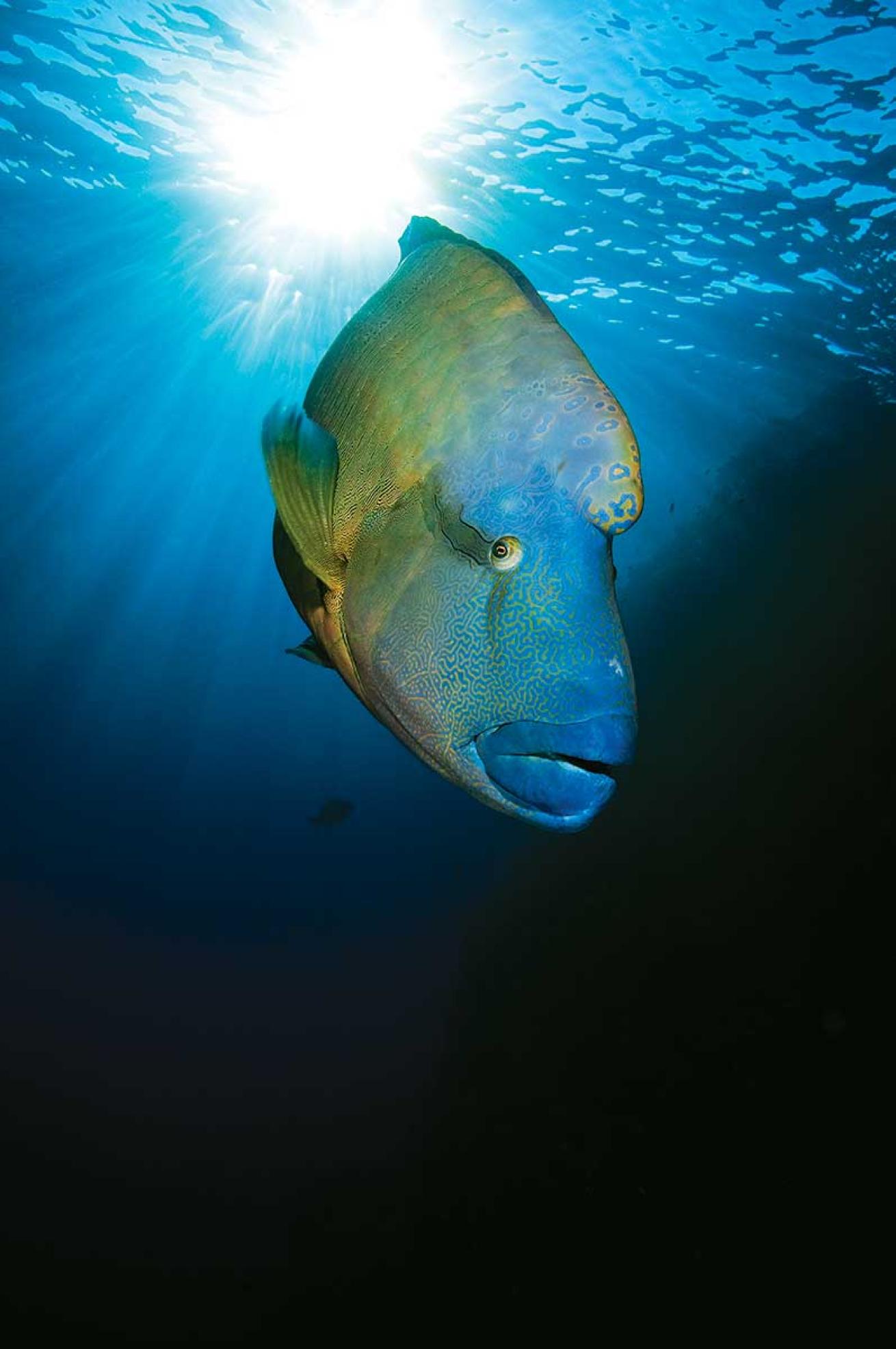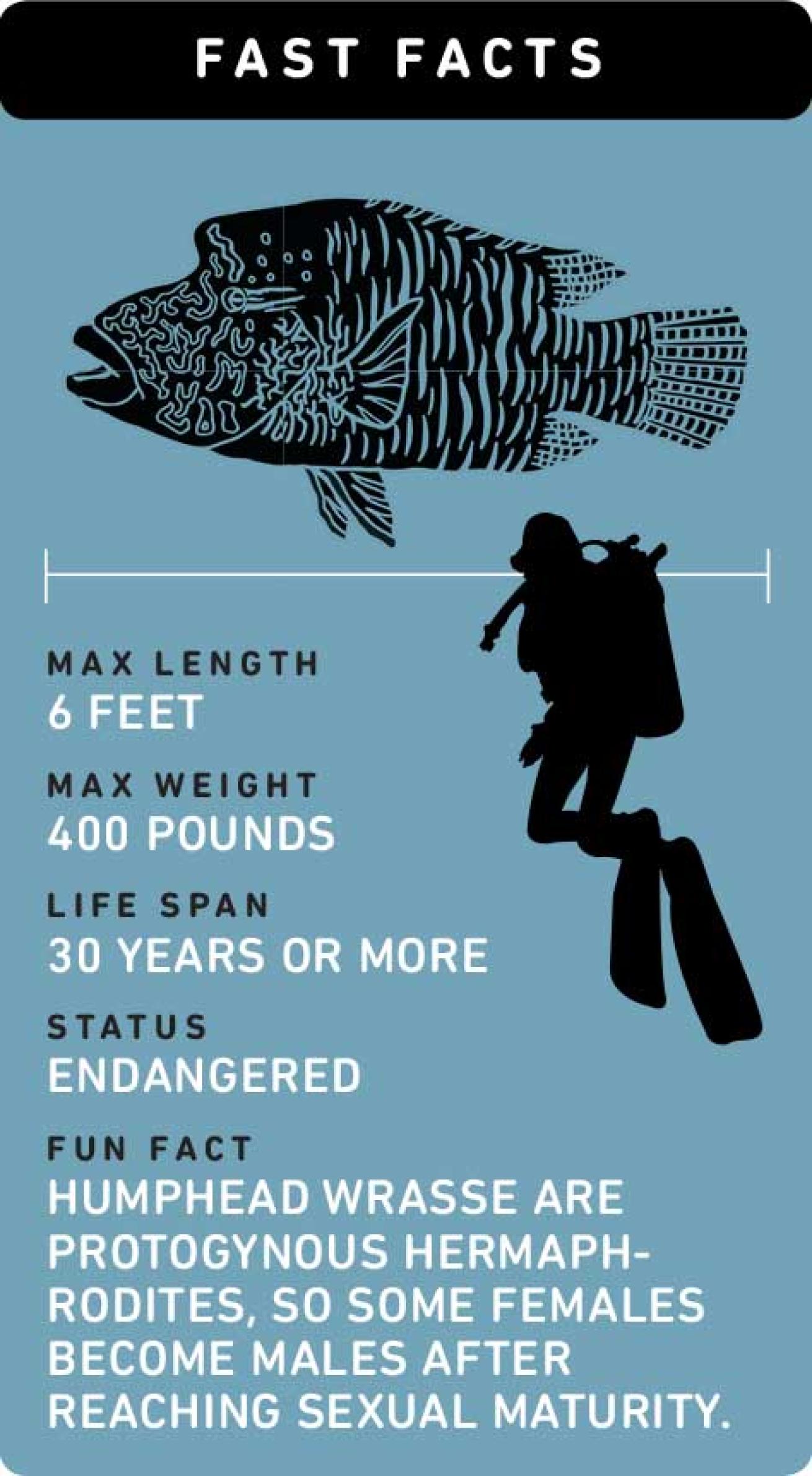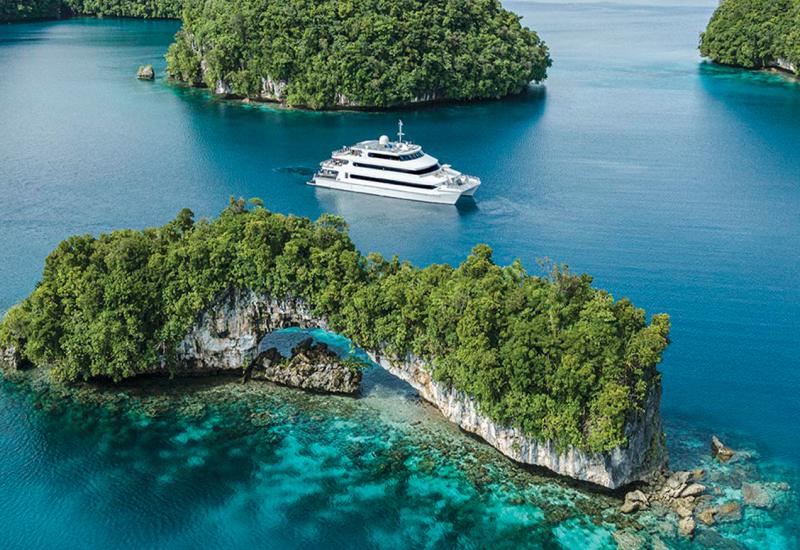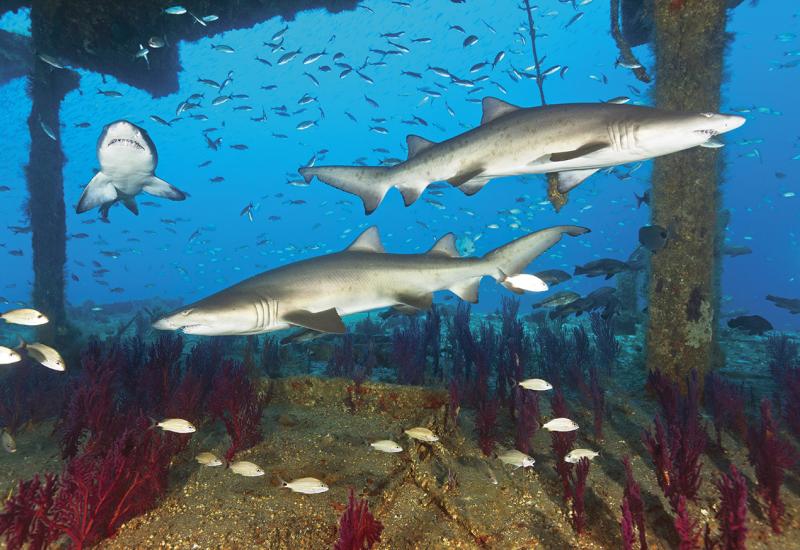Sea Watch: Where to Dive with Humphead Wrasse

HUMPHEAD WRASSE
These blue behemoths can get nosey — and cozy — with divers.
Dray van Beeck / Foto Natura/Minden Pictures
When divers think of the myriad types of wrasse they’ve seen, most conjure images of small, brightly colored reef dwellers flitting in and out of the corals, such as the bluehead wrasse spotted on practically every Caribbean reef. But there’s one species of wrasse that will forever change your perception of these tropical fish.
The humphead wrasse — also called the Napoleon or Maori wrasse — is by far the behemoth of the family, and also one of the biggest reef fish in the world, with males growing up to 6 feet long and more than 400 pounds.
The humphead wrasse is an Indo-Pacific species, and its habitat ranges from the Red Sea to Micronesia.

Identifying these massive creatures is easy, thanks to the large knob that protrudes from their foreheads and the almost iridescent blue, green and red colorations on their bodies. The hump grows as the fish become adults; the older they get, the larger the hump becomes — incredibly, humphead wrasse can live for about 30 years.
Unfortunately, their long life span and their tendency to live solitary lives are just two of many reasons why humphead wrasse have become increasingly rare throughout the Indo-Pacific. That’s because it takes more than seven years for individuals to begin reproducing, and the juveniles are very popular targets for the aquarium trade — not to mention their meat, and even their lips, can fetch sky-high prices in certain Asian markets. In fact, the population of humphead wrasse has decreased by 50 percent in the past 30 years.
One of the characteristics that makes these fish such a joy to encounter underwater is their curiosity and willingness to get up close and personal with divers. In some cases, they’ve been known to brush against divers, nudge them with their noses and seemingly encourage people to pet them. It’s quite the thrilling experience.

Another interesting feature of the fish is their diet. Their strong jaws allow them to crush and eat creatures such as crabs and sea urchins, but they also have natural immunities to toxic marine life, including crown-of-thorns starfish, making them one of only a handful of predators in the world that can take on these destructive, coral-munching echinoderms.
If you want to spot humphead wrasse in the wild, the best places to look are along steep coral ledges and current-swept passes in the Indo-Pacific. That’s a description that perfectly describes the diving in Palau, so it’s no surprise the island chain has many sites where encounters with these fish, often hanging out close to the reef edge or grazing among the corals, are common.
One of the best spots in Palau to see humphead wrasse is the world-famous Blue Corner dive site, where divers hook into the reef to hold fast against the current as swarms of marine life whip past. Peleliu Express is another good bet, where divers are likely to spot humphead wrasse as they ride ripping currents along the coral-rich wall.
Want More Animal Encounters? We've Got You Covered
Thriller: Diving with Leopard Seals

Dray van Beeck / Foto Natura/Minden Pictures
HUMPHEAD WRASSE
These blue behemoths can get nosey — and cozy — with divers.
When divers think of the myriad types of wrasse they’ve seen, most conjure images of small, brightly colored reef dwellers flitting in and out of the corals, such as the bluehead wrasse spotted on practically every Caribbean reef. But there’s one species of wrasse that will forever change your perception of these tropical fish.
The humphead wrasse — also called the Napoleon or Maori wrasse — is by far the behemoth of the family, and also one of the biggest reef fish in the world, with males growing up to 6 feet long and more than 400 pounds.
The humphead wrasse is an Indo-Pacific species, and its habitat ranges from the Red Sea to Micronesia.

Identifying these massive creatures is easy, thanks to the large knob that protrudes from their foreheads and the almost iridescent blue, green and red colorations on their bodies. The hump grows as the fish become adults; the older they get, the larger the hump becomes — incredibly, humphead wrasse can live for about 30 years.
Unfortunately, their long life span and their tendency to live solitary lives are just two of many reasons why humphead wrasse have become increasingly rare throughout the Indo-Pacific. That’s because it takes more than seven years for individuals to begin reproducing, and the juveniles are very popular targets for the aquarium trade — not to mention their meat, and even their lips, can fetch sky-high prices in certain Asian markets. In fact, the population of humphead wrasse has decreased by 50 percent in the past 30 years.
One of the characteristics that makes these fish such a joy to encounter underwater is their curiosity and willingness to get up close and personal with divers. In some cases, they’ve been known to brush against divers, nudge them with their noses and seemingly encourage people to pet them. It’s quite the thrilling experience.

Another interesting feature of the fish is their diet. Their strong jaws allow them to crush and eat creatures such as crabs and sea urchins, but they also have natural immunities to toxic marine life, including crown-of-thorns starfish, making them one of only a handful of predators in the world that can take on these destructive, coral-munching echinoderms.
If you want to spot humphead wrasse in the wild, the best places to look are along steep coral ledges and current-swept passes in the Indo-Pacific. That’s a description that perfectly describes the diving in Palau, so it’s no surprise the island chain has many sites where encounters with these fish, often hanging out close to the reef edge or grazing among the corals, are common.
One of the best spots in Palau to see humphead wrasse is the world-famous Blue Corner dive site, where divers hook into the reef to hold fast against the current as swarms of marine life whip past. Peleliu Express is another good bet, where divers are likely to spot humphead wrasse as they ride ripping currents along the coral-rich wall.
Want More Animal Encounters? We've Got You Covered
Thriller: Diving with Leopard Seals










